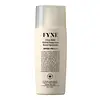What's inside
What's inside
 Key Ingredients
Key Ingredients

 Benefits
Benefits

 Concerns
Concerns

 Ingredients Side-by-side
Ingredients Side-by-side

Water
Skin ConditioningEthylhexyl Methoxycinnamate
UV AbsorberGarcinia Mangostana Peel Extract
Skin ConditioningGlycerin
HumectantDiethylamino Hydroxybenzoyl Hexyl Benzoate
UV FilterNeopentyl Glycol Diheptanoate
EmollientZinc Oxide
Cosmetic ColorantC12-15 Alkyl Benzoate
AntimicrobialBis-Ethylhexyloxyphenol Methoxyphenyl Triazine
Skin ConditioningNiacinamide
SmoothingEthylhexyl Triazone
UV AbsorberSodium Polyacrylate
AbsorbentAllantoin
Skin ConditioningSodium Hyaluronate
Humectant1,2-Hexanediol
Skin ConditioningMethylpropanediol
SolventPolyisobutene
Hydroxyacetophenone
AntioxidantEthylhexylglycerin
Skin ConditioningTitanium Dioxide
Cosmetic ColorantWater, Ethylhexyl Methoxycinnamate, Garcinia Mangostana Peel Extract, Glycerin, Diethylamino Hydroxybenzoyl Hexyl Benzoate, Neopentyl Glycol Diheptanoate, Zinc Oxide, C12-15 Alkyl Benzoate, Bis-Ethylhexyloxyphenol Methoxyphenyl Triazine, Niacinamide, Ethylhexyl Triazone, Sodium Polyacrylate, Allantoin, Sodium Hyaluronate, 1,2-Hexanediol, Methylpropanediol, Polyisobutene, Hydroxyacetophenone, Ethylhexylglycerin, Titanium Dioxide
Water
Skin ConditioningPropylene Glycol
HumectantEthylhexyl Methoxycinnamate
UV AbsorberBis-Ethylhexyloxyphenol Methoxyphenyl Triazine
Skin ConditioningMethylene Bis-Benzotriazolyl Tetramethylbutylphenol
UV FilterIsododecane
EmollientCetyl Alcohol
EmollientAmmonium Acryloyldimethyltaurate/Vp Copolymer
Glycerin
HumectantDipropylene Glycol
HumectantHelianthus Annuus Seed Oil
EmollientEthyl Ferulate
AntioxidantPolyglyceryl-5 Trioleate
EmollientRosmarinus Officinalis Leaf Extract
AntimicrobialBisabolol
MaskingMoringa Oleifera Seed Extract
Skin ConditioningDisodium Uridine Phosphate
Skin ConditioningHydrogenated Lecithin
EmulsifyingCeramide NP
Skin ConditioningPhenoxyethanol
PreservativeSodium Hyaluronate
HumectantCholesterol
EmollientCeramide As
Skin ConditioningCeramide AP
Skin ConditioningCeramide Ns
Skin ConditioningCeramide EOP
Skin ConditioningTocopheryl Acetate
AntioxidantCoco-Glucoside
CleansingGlyceryl Stearate
EmollientDecyl Glucoside
CleansingHydroxyethylcellulose
Emulsion StabilisingXanthan Gum
EmulsifyingChlorphenesin
AntimicrobialDisodium EDTA
Water, Propylene Glycol, Ethylhexyl Methoxycinnamate, Bis-Ethylhexyloxyphenol Methoxyphenyl Triazine, Methylene Bis-Benzotriazolyl Tetramethylbutylphenol, Isododecane, Cetyl Alcohol, Ammonium Acryloyldimethyltaurate/Vp Copolymer, Glycerin, Dipropylene Glycol, Helianthus Annuus Seed Oil, Ethyl Ferulate, Polyglyceryl-5 Trioleate, Rosmarinus Officinalis Leaf Extract, Bisabolol, Moringa Oleifera Seed Extract, Disodium Uridine Phosphate, Hydrogenated Lecithin, Ceramide NP, Phenoxyethanol, Sodium Hyaluronate, Cholesterol, Ceramide As, Ceramide AP, Ceramide Ns, Ceramide EOP, Tocopheryl Acetate, Coco-Glucoside, Glyceryl Stearate, Decyl Glucoside, Hydroxyethylcellulose, Xanthan Gum, Chlorphenesin, Disodium EDTA
 Reviews
Reviews

Ingredients Explained
These ingredients are found in both products.
Ingredients higher up in an ingredient list are typically present in a larger amount.
You might know this ingredient as Tinosorb S or Bemotrizinol. It is a UV filter that covers both UVA and UVB rays.
This ingredient has two peak UV absorption peaks ( 310 and 340 nm) and is able to absorb both UV-A and UV-B rays. This ingredient works by preventing UV rays from reaching and damaging your skin.
On top of that - it is highly photostable and helps prevent the photodegration of other sunscreen ingredients such as avobenzone.
Tinosorb S is allowed in the EU, Australia, and Asia. It is close to being approved by the FDA and we'll hopefully get this ingredient in the U.S. by late 2025.
Fun fact: Tinosorb S is the most effective UV absorber at maximum concentration (measured by SPF) permitted in the EU.
This ingredient is oil-soluble, so your oil-cleansers will take this right off at night.
Learn more about Bis-Ethylhexyloxyphenol Methoxyphenyl TriazineEthylhexyl Methoxycinnamate is an organic compound that provides UVB protection. It often goes by the more common name of octinoxate. It is created from methoxycinnamic acid and 2-ethylhexanol.
Ethylhexyl Methoxycinnamate absorbs UVB rays with wavelengths between 280-320 nm. UV absorbers protect your skin by using chemical reactions to convert UV rays into heat and energy.
UVB (290-320 nm) rays emit more energy than UVA rays. They are capable of damaging DNA, causing sunburns and are thought to be linked to skin cancer.
The state of Hawaii has banned sunscreens containing octinoxate due to its potential impact on coral reefs. More research is needed to bridge gaps in this research. The European Union allows higher levels of octinoxate in sunscreens than the US and Australia.
Ethylhexyl Methoxycinnamate is oil soluble. It is not stable and may lose efficacy when exposed to sunlight.
Learn more about Ethylhexyl MethoxycinnamateGlycerin is already naturally found in your skin. It helps moisturize and protect your skin.
A study from 2016 found glycerin to be more effective as a humectant than AHAs and hyaluronic acid.
As a humectant, it helps the skin stay hydrated by pulling moisture to your skin. The low molecular weight of glycerin allows it to pull moisture into the deeper layers of your skin.
Hydrated skin improves your skin barrier; Your skin barrier helps protect against irritants and bacteria.
Glycerin has also been found to have antimicrobial and antiviral properties. Due to these properties, glycerin is often used in wound and burn treatments.
In cosmetics, glycerin is usually derived from plants such as soybean or palm. However, it can also be sourced from animals, such as tallow or animal fat.
This ingredient is organic, colorless, odorless, and non-toxic.
Glycerin is the name for this ingredient in American English. British English uses Glycerol/Glycerine.
Learn more about GlycerinSodium Hyaluronate is hyaluronic acid's salt form. It is commonly derived from the sodium salt of hyaluronic acid.
Like hyaluronic acid, it is great at holding water and acts as a humectant. This makes it a great skin hydrating ingredient.
Sodium Hyaluronate is naturally occurring in our bodies and is mostly found in eye fluid and joints.
These are some other common types of Hyaluronic Acid:
Learn more about Sodium HyaluronateWater. It's the most common cosmetic ingredient of all. You'll usually see it at the top of ingredient lists, meaning that it makes up the largest part of the product.
So why is it so popular? Water most often acts as a solvent - this means that it helps dissolve other ingredients into the formulation.
You'll also recognize water as that liquid we all need to stay alive. If you see this, drink a glass of water. Stay hydrated!
Learn more about Water